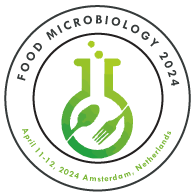About Conference
All! We the team of "Food Microbiology 2024"inviting to all of the great scientists, academicians, young researchers, Business delegates and students from all over the world to join the 18th International Conference on Food Microbiology during April 11-12, 2024 in Amsterdam, Netherlands
This conference provides the attendees a great occasion to partake their new ideas and advancing technologies that can be used in the field of Food Microbiology and Food Technology. The ideal of this conference is to club the International Food Microbiology Conference groups to probe the crucial themes and difficulties that are faced in our field faces. The intension of this conference is" probing the on- going advances in Food Microbiology and Food Technology", which explores the on- going advance rather it could be extended to all implicit ways which will be useful in advancement exploration in this arising field. As experts of the food microbiology field, experimenters, and resides we need to cooperate to probe the doable issues and plan consequently for collaborative development of our wisdom, its vital operations, and responsible practices. Food Technology can be employed to advance the life of the world moment. The major observation that is going to be observed is" The use of Molecular Approaches in all corridor of current Food Science field". This conference also emphasizes on all the possible verticals of current exploration on microbes that have both salutary and dangerous goods on the safety and quality of foods and are therefore a concern of public health.
Market Analysis
Global Market of Food Microbiology and foodstuff
Food Microbiology
The Global Food Microbiology Market report studies current and upcoming development prospects to assist interest for the Food Microbiology Testing over the figure time-frame.
The U.S. market for Food Microbiology and foodstuff totaled nearly $56.4 billion in 2014. This market is predicted to approach $61.4 billion in 2015 and $69.8 billion by 2021, registering a compound annual growth rate (CAGR) of 2.5% through 2022.
Food Security
Achieving greater global food security may be a noble goal and, many would argue, an ethical responsibility. It is also squarely within our self-interest because hunger causes unrest and instability, which successively affect U.S. national security and commercial interests. Global food security requires a multi-pronged strategy. Increased investment in research and development and improvements to production capacity is absolutely vital to increase the availability of food and meet increased demand.
Rapid urbanization, particularly in developing countries, is a critical ongoing trend shaping food security and nutrition that will continue in 2017 and beyond. Nearly 90 percent of the projected urban population increase is concentrated in Africa and Asia, with China, India, and Nigeria alone expected to feature 900 million urban residents by 2050
Food and Nutrition
The research uncovers many paradigm shifts within the studied market, in terms of regional competitive advantage, competitive landscape among the key players within the clinical nutrition industry, and market dynamics.
The global Food and nutrition market should reach $60.8 billion by 2022 from $48.2 billion in 2017 at a compound annual rate of growth (CAGR) of 4.9% for the amount 2017-2022.
Food Safety
Global Markets and Technologies for Food Safety Testing organizes information from diverse sources and market segments into a cohesive unit that has a summary, overview, technologies, contaminants tested, foods tested, industry structure, international aspects, patent activity, and company market shares, annual revenues and profiles. Market measurements/estimates and forecasts are provided for the worldwide market, and key market dynamics are discussed and their possible effects analyzed.
The global food safety testing market reached $10.5 billion in 2014 and will reach about $13.6 billion in 2019 with a five-year compound annual growth (CAGR) of 5.5% through 2022.



